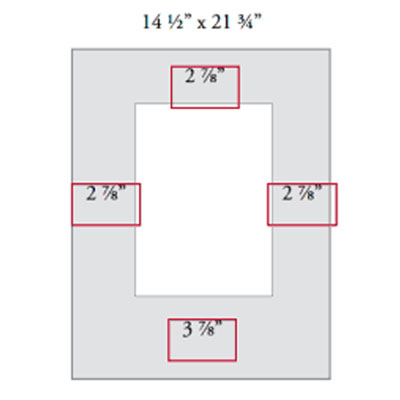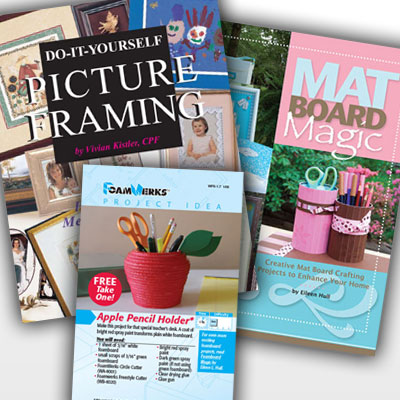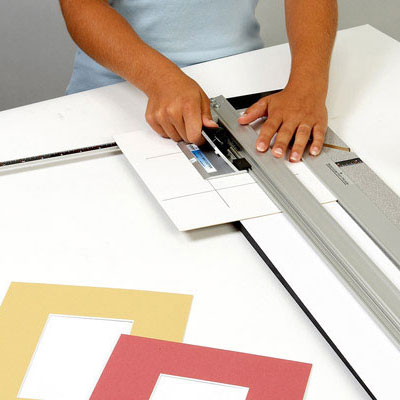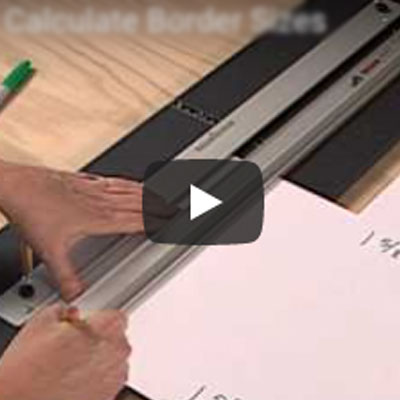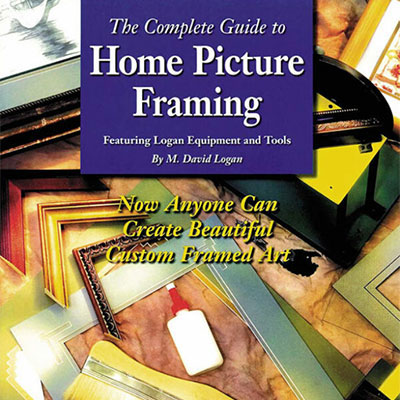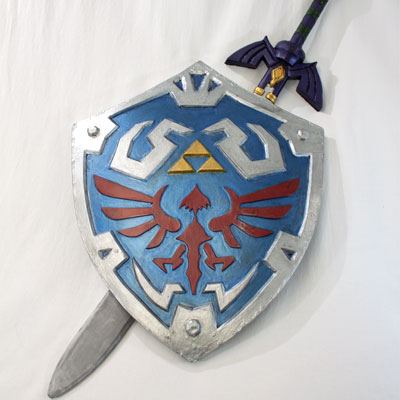Occasionally, for aesthetic effect, framers want to raise the window mat off the artwork so it appears to be suspended above the artwork, sort of hovering there. This is called a shadow box effect. There is some confusion with this terminology since "shadow box" also refers to the type of deep frame used for displaying three-dimensional objects, also known as an object box. What we're talking about here is a shadow box effect.
The shadow box effect works best when the artwork is displayed as a matted float. As a reminder, a matted float involves first mounting the artwork on a mat blank and then cutting a window in the mat that's larger than the artwork, revealing the edges of the artwork and a margin of the mat blank within the window. Selecting the color of the mat blank, then, is much like selecting the color of the undermat in a double mat. It is an accent color which surrounds the artwork in a narrow band. In the case of a shadowbox effect, that accent color does not end abruptly at the edge of the mat's window but fades into the shadowy recesses under the mat which is raised above it. The technique for float mounting the artwork to the mat blank will be covered in the next chapter. Here we will concern ourselves with raising the window mat above the mat blank, a procedure accomplished with the use of foamboard.
Step One: Using a 90-degree cutting head adjusted to its lowest depth setting, cut a sheet of 1⁄8 " thick foamboard into narrow strips (Figure T‑1). The length and width of those strips depends on the size of your mat and the width of its borders. The strips should always be slightly narrower than half the width of the border. So if the mat border is 2", the strip should be about 7⁄8 " wide. You don't have to be exact. The main objective is to conceal the strips beneath the mat so they aren't glimpsed when the mat is viewed from the side. The length of the first two strips should be slightly less than the length of the mat. Again, you don't have to be exact. If the length of the mat is 20", the first two strips can be 19". The length of the remaining two strips must take into account the presence of the first two strips. They should be shorter than the mat is wide, minus the width of the other two strips. So if, say, the mat is 16" wide and the other two strips are 7⁄8 " wide, strips of 13 1⁄2 " ought to suffice.
Step Two: Apply double-sided adhesive tape or ATG tape on both sides of each strip (Figure T‑3).
Step Three: With the artwork already affixed to the mat blank, assemble the strips on the mat blank, bringing them close to, but not against, the edges of the blank (Figure T‑4).
Step Four: Place the window mat down against the strips of foamboard, adhering it to them (Figure T‑5). Your shadowbox effect is now complete.






